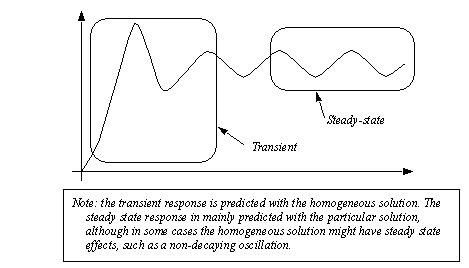
Up to this point we have mostly discussed the process of calculating the system response. As an engineer, obtaining the response is important, but evaluating the results is more important. The most critical design consideration is system stability. In most cases a system should be inherently stable in all situations, such as a car "cruise control". In other cases an unstable system may be the objective, such as an explosive device. Simple methods for determining the stability of a system are listed below:
1. If a step input causes the system to go to infinity, it will be inherently unstable.
2. A ramp input might cause the system to go to infinity; if this is the case, the system might not respond well to constant change.
3. If the response to a sinusoidal input grows with each cycle, the system is probably resonating, and will become unstable.
Beyond establishing the stability of a system, we must also consider general performance. This includes the time constant for a first-order system, or damping factor and natural frequency for a second-order system. For example, assume we have designed an elevator that is a second-order system. If it is under damped the elevator will oscillate, possibly leading to motion sickness, or worse. If the elevator is over damped it will take longer to get to floors. If it is critically damped it will reach the floors quickly, without overshoot.
Engineers distinguish between initial setting effects (transient) and long term effects (steady-state). The transient effects are closely related to the homogeneous solution to the differential equations and the initial conditions. The steady-state effects occur after some period of time when the system is acting in a repeatable or non-changing form. Figure 3.30 A system response with transient and steady-state effects shows a system response. The transient effects at the beginning include a quick rise time and an overshoot. The steady-state response settles down to a constant amplitude sine wave.

Figure 3.30 A system response with transient and steady-state effects